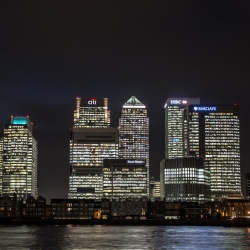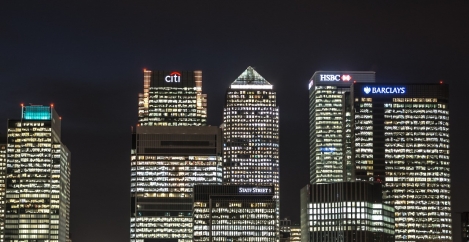November 25, 2025
Canary Wharf travel numbers return to pre pandemic levels
 New figures suggest a sustained return to office working in London’s major business district, with Tube and rail journeys to Canary Wharf reaching their highest levels since before the pandemic. An analysis of Transport for London data indicates that an average of 91,000 daily journeys were made to the district’s stations in October on the Underground, Elizabeth Line and Docklands Light Railway. The total exceeded the equivalent month in 2019 and outpaced the recovery seen in the City and West End, where employers in sectors such as media and technology have been slower to insist on full time office attendance.
New figures suggest a sustained return to office working in London’s major business district, with Tube and rail journeys to Canary Wharf reaching their highest levels since before the pandemic. An analysis of Transport for London data indicates that an average of 91,000 daily journeys were made to the district’s stations in October on the Underground, Elizabeth Line and Docklands Light Railway. The total exceeded the equivalent month in 2019 and outpaced the recovery seen in the City and West End, where employers in sectors such as media and technology have been slower to insist on full time office attendance.
The rise in commuter traffic reflects firmer policies from several large corporations. JPMorgan Chase is among the firms requiring most staff to return to the office five days a week. The bank has taken extra space in the Credit Suisse building at Canary Wharf to accommodate the increase in occupancy.
The uplift is also being linked to broader changes across the estate. Once viewed as quiet outside working hours, Canary Wharf has benefited from significant investment in retail, leisure and visitor attractions. The opening of the Elizabeth Line in 2022 has reduced east west travel times and made the area more accessible for tourists as well as workers.
According to the Bloomberg study, daily visits to Canary Wharf reached 105 percent of pre pandemic levels in October. Comparable figures were 84 percent in the West End and 89 percent in the City of London.
The estate’s owners, Brookfield and Qatar, have sought to diversify activity with new shops, cafés, bars, sports facilities and events. Canary Wharf Group says more than 72 million people visited last year, with numbers continuing to rise in 2024. The estate now hosts more than 320 shops and 80 cafés, bars and restaurants.
The office market has also shown renewed strength. CoStar reports that Canary Wharf is on track for its strongest year of leasing in a decade, with around 800,000 square feet of deals expected by year end. Vacancy rates have fallen to 6 percent. HSBC, which had planned to relocate to a new headquarters near St Paul’s by 2027, recently said it had underestimated the long term impact of remote working and has taken additional space at Canary Wharf.















